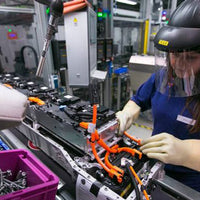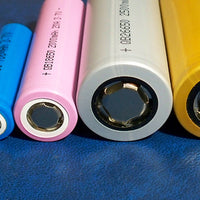Lithium iron phosphate battery and lithium manganese acid, lithium cobalt acid, the ternary(NCM) lithium battery is the same lithium-ion battery branch, its performance is mainly suitable for power applications, then called lithium iron phosphate power battery, also known as lithium iron battery. Therefore, the advantage of lithium iron phosphate batteries mainly refers to its comparison with other batteries in power applications. In this sense, it will be compared with ternary lithium batteries and lead-acid batteries comparative advantages.
The advantages of high-temperature resistance compared with ternary lithium batteries. The high-temperature performance of lithium iron phosphate battery is better, which can withstand 350°C~500°C high temperature, while lithium manganate/lithium cobalt oxide battery usually only about 200°C, the modified ternary lithium battery material will also decompose at 200°C.
The "elder" of the three -- the absolute advantage of long life. The cycle life of lithium iron phosphate battery is longer than that of lead-acid battery and ternary lithium battery. The "long life" of lead-acid batteries is only about 300 times, up to 500 times; The capacity of the ternary lithium battery can reach 2000 times in theory, but it will decay to 60% after 1000 times in practice. The real-life of lithium iron phosphate battery is 2000 times, with 95% capacity at this time, and its concept cycle life is more than 3000 times.
Compared with a lead-acid battery, it has many advantages:
1. Large capacity. The monomer can be made into 5Ah~1000Ah (1Ah = 1000mAh), while the 2V monomer of lead-acid battery is usually 100Ah~150Ah, with a small range of variation.
2. Lightweight. A lithium iron phosphate battery of the same capacity is 2/3 the volume and 1/3 the weight of a lead-acid battery.
3. Fast charging ability. The starting current of lithium iron phosphate battery can reach 2C to achieve a high charging rate; The current of lead-acid battery is generally required to be between 0.1c and 0.2c, so the fast charging performance cannot be achieved.
4. Environmental protection. Lead-acid batteries contain a large amount of heavy metal, lead, which produces waste liquid, while lithium iron phosphate batteries do not contain any heavy metal and are pollution-free in production and use.
5. Good value for money. Although lead-acid batteries cost less than lithium iron phosphate batteries due to their cheap materials, their service life and economy in daily maintenance are lower than lithium iron phosphate batteries. Practical application results show that the cost performance of lithium iron phosphate batteries is more than 4 times that of lead-acid batteries.
Lithium iron phosphate battery application scope is mainly manifested in the direction of power, but also theory can be extended to more areas, it is by the comparison of the various advantages, if in such aspects as energy density and the discharge ratio do ascend, traditional into other types of lithium-ion battery application field is also possible.

What are the advantages of lithium iron phosphate batteries?
in News







0 comments